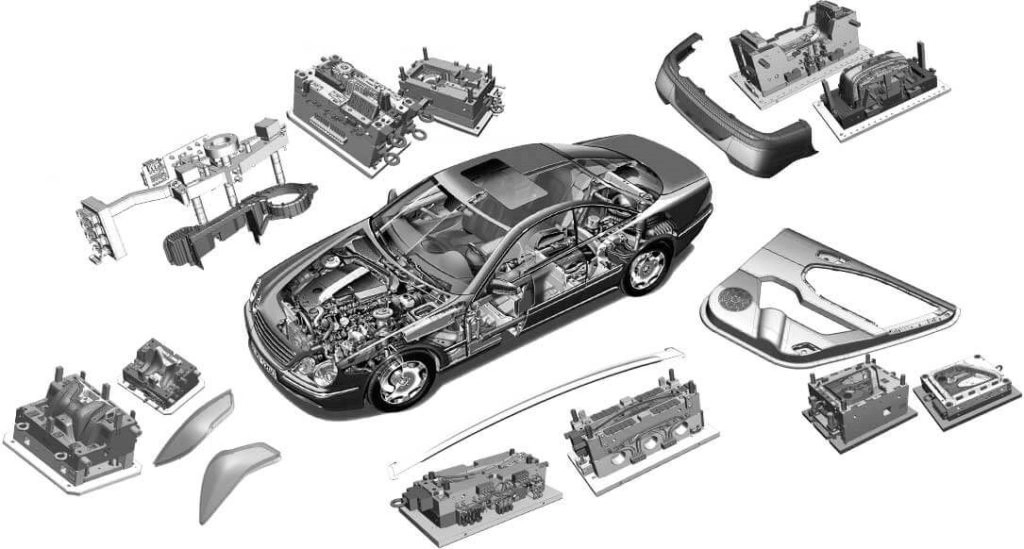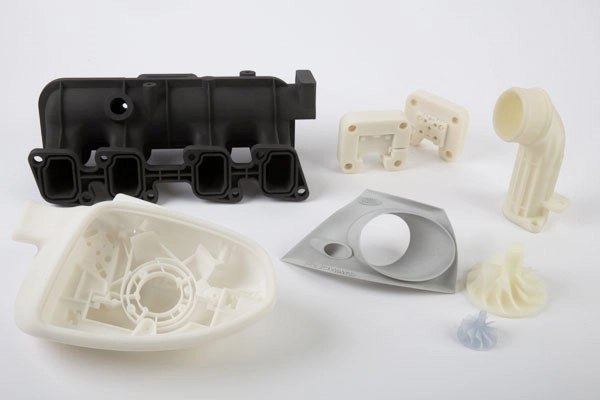Introduction to Automotive Plastic Injection Molding
Why Injection Molding Matters in the Automotive Sector
Automotive plastic injection molding is an important process in car making. Vehicles now use more plastic parts than ever. Injection molding creates light, strong, and detailed car parts fast and well. This helps meet big demand. It also ensures great performance. From bumpers to dashboards, molding plastic car parts has changed automotive design.
How the Process Works
Plastic injection molding for automotive parts begins by heating thermoplastic material. It melts. The liquid plastic is injected into a mold. The mold is shaped like the needed part. After cooling, the part is taken out. The process repeats. This method is quick and steady. It’s perfect for mass production. In the plastic injection molding automotive industry, this ensures each piece is almost the same. This is vital for car safety and design rules.

Historical Context and Evolution of Plastic Injection Molding in the Automotive Industry
Early Adoption of Plastics in Vehicles
The use of injection molding in the automotive industry started with simple plastic pieces. These included knobs and trim. Over time, carmakers saw plastics could do more. They used molded plastics for more than looks. These materials lowered car weight. They also cut costs. This led to better fuel use and cheaper production.
The Shift from Metal to Plastic in Auto Part Manufacturing
A big change was moving from metal to plastic injection car parts. Plastic doesn’t rust. It weighs less than metal. These benefits made it great for modern cars. Thanks to automotive plastic injection moulding, makers could design parts that are tough, sleek, and light.
Benefits of Plastic Injection Molding Automotive Parts
Design Flexibility and Complexity
Plastic injection moulding automotive processes allow complex designs. These would be hard or impossible with metal. Multiple features can be built into one part. This saves assembly time and cost. Engineers have more freedom. They create parts that fit well in modern car designs.
Lightweight and Fuel Efficiency
Plastic injection automotive parts are much lighter than metal ones. This lowers the vehicle’s weight. Lighter cars use less fuel. They also make fewer emissions. So, automotive plastic injection moulding helps cars be greener and more fuel-saving.
Cost-Effectiveness and Mass Production
Plastic parts made with injection molding are cheaper to produce in large amounts. Once the mold is made, thousands of parts can be created. There’s little waste. This makes automotive injection moulding a budget-friendly choice. It suits carmakers needing reliable, high-volume production.
Durability and Safety
Injection molded plastic automotive parts are tough. They handle impact, heat, and chemicals well. This is key for safety. Whether it’s a bumper or an under-hood part, plastic parts keep drivers and passengers safe.
Applications of Injection Molding in Automotive Industry
Interior and Exterior Plastic Parts
Many car parts inside and outside use injection molding. Dashboards, center consoles, door panels, and grilles are examples. Auto trim plastic injection mold technology makes these parts useful and stylish.
Under-the-Hood Components
Under the hood, you find injection molded parts. These include air ducts, engine covers, and battery housings. They must handle heat and vibration. Plastic injection molding for automotive ensures these parts meet strict safety and toughness standards.
Lighting and Electronics
Injection molding for electronic equipment of motor vehicles makes plastic cases. These are for sensors, control units, and headlamp housings. They protect delicate electronics from water and dirt. They stay light and precise.
Structural Parts and Safety Components
Important safety parts use plastic injection molding automotive industry techniques. Bumpers and energy-absorbing zones are examples. These parts absorb shock. They protect passengers during accidents.
Common Materials Used in Automotive Injection Molding
High-Performance Thermoplastics
Common materials include ABS, polypropylene, nylon, and TPU. Each is picked based on the part’s job. For example, nylon is great for strength and heat resistance. It’s ideal for engine parts.
Choosing the Right Material for Functionality
Plastic parts applications depend on the right material. If flexibility is needed, one plastic is used. If the part needs to be clear or strong, another is chosen. Matching material to the job improves function and safety.
Plastic Injection Molding Techniques Shaping the Automotive Sector
Overmolding and Insert Molding
Overmolding and insert molding combine multiple materials into one part. This improves grip. It adds strength. It also reduces vibration in plastic injection molding automotive parts.
Gas-Assisted and Micro Injection Molding
Gas-assisted molding makes large, hollow parts without warping. Micro molding creates tiny, precise parts. Both are used in advanced plastic auto parts mould techniques. They meet different needs in automotive injection molding.
The Automotive Plastic Parts Manufacturing Process at a Glance
From CAD to Mould Fabrication
The process starts with a 3D model. CAD software is used. This helps engineers design perfect parts. Then, molds are made with precise machines. The automotive plastic injection mold design affects the final product.
Mass Production at Injection Molding Car Parts Factories
Once molds are ready, production starts. At an injection molding car parts factory, machines inject, cool, and eject parts fast. This allows thousands of parts to be made. They have high consistency. This ensures reliable quality for every car.
Silkbridge’s Role in Automotive Plastic Injection Molding
Full-Service Manufacturing for Auto Parts
Silkbridge Electronic Technology offers complete plastic injection molding for automotive. They handle design to delivery. They support plastic injection molding for consumer electronics, medical devices, and auto parts. With services like PCB assembly and mold making, Silkbridge delivers trusted solutions. Their processes are ISO-certified.
Engineering Innovation Meets Production Efficiency
Silkbridge combines British design and Chinese manufacturing skills. Their work in automotive injection molding supports fast, creative, and high-quality production. They serve global clients.
Quality Assurance and Global Reach
Silkbridge uses advanced tools like AOI and X-ray systems. These ensure every plastic injection molding automotive part meets strict quality standards. Their global logistics make delivery quick and smooth.
Conclusion: Why Automotive Plastic Injection Molding Will Define the Industry’s Future
A Transformative Manufacturing Solution
Plastic injection molding automotive methods have changed car making. They offer better design freedom. They lower costs. They also support greener production. Whether for speed, safety, or style, injection molding shapes the future of cars.
Partner with Silkbridge for Next-Gen Auto Manufacturing
Silkbridge provides expert help for companies using plastic injection molding for automotive production. Their full-service approach brings ideas to market with precision and care.
Looking to improve your automotive product line?
Contact Silkbridge Electronic Technology to explore full-spectrum solutions in plastic injection molding automotive parts. They cover concept to global distribution. Let innovation drive your next product.
Message us on WhatsApp or call +86 8618122838771 or Email contact@silkbridgeltd.com for expert advice on your next project.




